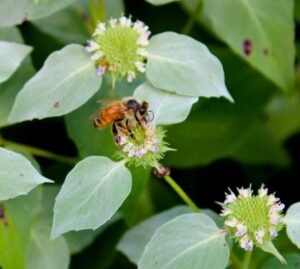
“You attract more bees with honey than vinegar,” my grandmother—and maybe yours—used to say.
“Yah, yah,” I used to reply sarcastically to myself, as I tuned her out.
It turns out she had the makings of a good leader.
It’s Science, but not Rocket Science
Case Western Reserve University studied two different approaches to leadership coaching. Researchers split students into two groups.
The first received a 30-minute session with a coach who used positive emotional attractors (PEAs). This person welcomed sophomores to talk about their dreams for their life in 10 years. Not surprisingly, imagining led their visual cortex to light up. Their default mode network (DMN) also got involved. This showed they were engaged in the conversation, and open to new ideas and people.
The second group’s 30-minute coaching experience emphasized negative emotional attractors (NEAs). The coaches asked students how they were doing with their homework, reading and other assignments. The parts of their brains that lit up were associated with shame and self-consciousness. So did other areas, indicating they were not open to new ideas, or working on learning or changing.
Why Aren’t We Doing This Already?
People in western countries have eight to 15 chronic, annoying stress episodes a day. For men, this averages five to six times a week. For women, it’s every day.
Our bodies experience each one as a mini trauma. That jumpstarts our sympathetic nervous system, which is associated with NEAs:
- Our peripheral vision narrows
- We’re can’t come up with ideas and aren’t open to ones from others
- We have trouble with complex tasks
Our parasympathetic nervous system, triggered by PEAs, helps to balance this. It relaxes our breathing, lowers our heart rate and blood pressure, and decreases the stress hormones that lead to that list of symptoms.
Dr. Richard Boyatzis, who has pioneered this research, says we need both. PEAs open us up to greater possibilities. NEAs help us implement the vision we created. To maintain a good balance, he suggests that we need three PEAs for each NEA at work.
Add PEAs to Your Team’s Diet
Yes: you need to give your people feedback. But know that when you weight that conversation toward evaluation and developmental “telling” them what to do, you’ve just shut down the parts of their brains that will help them do what you ask.
We think of honey as complimenting our people, which is good and helpful. But that differs from mindfully using PEAs. Ask the bigger questions:
- What’s working with our team?
- When are you at your best?
- What do you want to get from work?
Start balancing those chronic stress episodes. Use PEAs to inspire, motivate and engage your people. Watch amazing things happen!
Want to become a better leader by using tactics proven to get results? Let’s talk.
